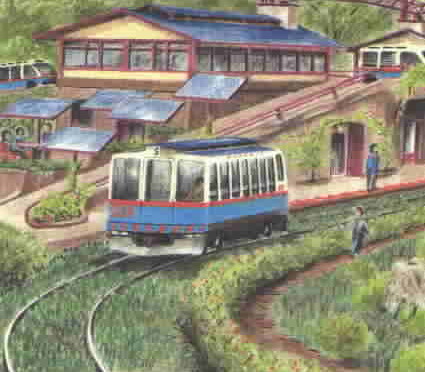Novato Advance May 9, 1990
Viewpoint
CASA program a model
By DWAYNE HUNN
Some interesting things have been happening at Novato Ecumenical Housing recently. Last month NEH was notified by the Federal National Mortgage Association (FANNIE MAE) that our Community Assisted Shared Appreciation (CASA) home ownership program for low and moderate income households will re recognized in FANNIE MAE’S 1990 Blue Book as one of two national models shared equity home ownership programs. FANNIE MAE uses its prestigious annual publication to recognize programs that it believes should be emulated by other cities across the nation.
The national recognition does not come without some irony. For years, NEH has struggled to obtain additional funds to expand our CASA program in Novato and throughout the county. So many political, environmental, and bureaucratic boulders have been placed in our path that we often feel like Sisyphus, the mythological figure who was compelled to roll a stone to the top of a slope, the stone always escaping him near the top and rolling down again.
Perhaps the uphill fight, taking place among the rolling hills of exclusive Marin, is part of the reason the program has been recognized. CASA has assisted more than 60 low and moderate income families in purchasing their first homes in Novato. Families earning as low as 34% of Marin’s median income have purchased homes through this deferred principal and interest second mortgage home ownership program. Our average second mortgage assistance been $37,000 per family and their average income has been $22,700.
NEH is proud of the award. We are prouder, however, that we have been able to help many starting families obtain the Great American Dream. Our assisted owners are not, as our uninformed opponents like to portray them, low-lifes. They are nurses, sheriff and police department employees, private entrepreneurs, secretaries, hard-working, single moms, etc. They are essential service providers and they have an almost non-existent mortgage failure rate.
NEH has been able to raise more than $2 million to fund this program. The sources from which we raised the funds might help explain to some who oppose our work why we often argue on behalf of sensible, long-term environmentally sound developments. Source of Affordable Ownership Housing Trust Funds:
- 53 percent developer contributions. Densities have been cut so drastically in Novato that no new sources of in-lieu fees are foreseen in the near future.
- 18 percent Community Development Block Grants. We have not received and additional CDBG funds since 1984.
- 15 percent NEH’s recapture of its equity share and second mortgage. Soon NEH will be the second largest supplier to its own program. Unfortunately, that means the program is not growing to handle the increased need.
- 11 percent San Francisco Foundation. The San Francisco Foundation was replaced by the Marin Community Foundation.
- 4 percent Marin Community Foundation.
As you can see, most of our funds which allow us to assist Novato residents in purchasing their own Novato homes come from developer contributions. When reasonable densities are drastically reduced to such a low point that developers cannot justify the expense of affordable unit development or developers are not required to contribute in-lieu fees, we cannot help balance the jobs/housing imbalance.
The Brookside development is an example of how drastic density reductions hurt Novato’s ability to balance housing with the purchasing power of local residents. Ten years ago Brookside was approved for 120 units, of which 34 were to be affordable. The Novato City Council then cut the allowed development to 70 units on 59 acres with no affordable units. Now come “concerned” citizens want the density to be cut to 0 units and want to you to assess yourself a parcel tax to purchase the Brookside land for open space.
This desire for more open space is taking place in a county where more than 84 percent of the land is set aside in open space, agriculture reserve and park land. The petitions are being gathered in a city where, in 1980, the city averaged four units per acre and where today that average has dropped to about 2.4 units per developed acre. Politics, like awards, often has an ironic character to it.
For more information, call 892-8136.



